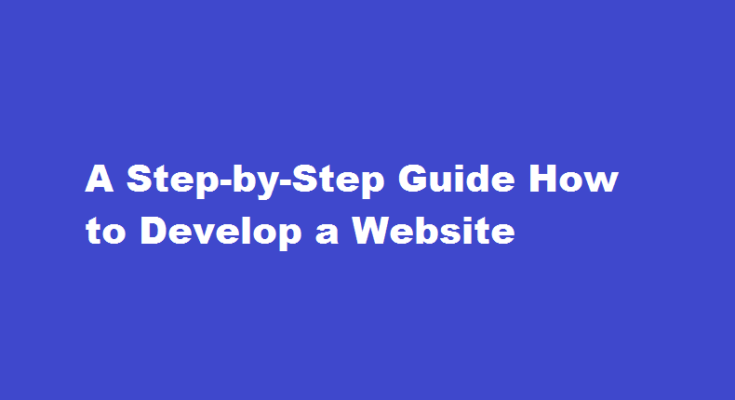Introduction
In today’s digital age, having a website is crucial for businesses, organizations, and individuals alike. However, the process of developing a website may seem daunting for those without technical expertise. Fear not! This article will provide you with a step-by-step guide on how to develop a website, from planning to deployment. By following these steps, you’ll be able to create a unique and informative website that meets your goals and engages your audience.
Define Your Goals and Target Audience
Before diving into website development, it’s important to define your goals and identify your target audience. Consider what you want to achieve with your website. Is it to showcase your portfolio, sell products, or share information? Additionally, determine your target audience and their preferences to design an appealing website that resonates with them.
Plan Your Website Structure and Content
Next, plan the structure and content of your website. Create a site map to outline the main pages and their hierarchy. Think about the navigation menu and how users will access different sections of your site. Additionally, consider the content you want to present on each page. Ensure your content is informative, engaging, and optimized for search engines.
Choose a Suitable Website Platform
Selecting the right website platform is crucial for your development process. There are various options available, ranging from Content Management Systems (CMS) like WordPress and Joomla, to website builders like Wix and Squarespace. Research these platforms, consider their features, ease of use, and customization options. Choose the platform that aligns with your goals, technical expertise, and budget.
Design and Develop Your Website
Once you’ve chosen a platform, it’s time to design and develop your website. Select a visually appealing theme or template that suits your brand and customize it to reflect your unique style. Ensure your website design is user-friendly, responsive, and compatible with different devices. Focus on creating an intuitive user experience, with clear calls-to-action and easy-to-navigate pages.
If you have coding knowledge, you can further customize your website using HTML, CSS, and JavaScript. However, most website platforms offer drag-and-drop functionality, allowing you to build your site without coding.
Add Relevant and Engaging Content
Content is king! Populate your website with high-quality, relevant, and engaging content. Write informative and well-structured text, create visually appealing images, and consider incorporating multimedia elements like videos and infographics. Ensure your content is optimized for search engines by using relevant keywords and meta tags. Regularly update your content to keep it fresh and provide value to your visitors.
Test and Optimize Your Website
Before launching your website, thoroughly test its functionality across different browsers, devices, and screen sizes. Check for broken links, slow loading times, and any compatibility issues. Optimize your website’s performance by compressing images, minifying code, and enabling caching. Ensure your website is accessible to users with disabilities by following accessibility guidelines. Run tests to optimize your website’s search engine ranking and improve its loading speed.
Launch and Maintain Your Website
Once you’re satisfied with the testing and optimization, it’s time to launch your website. Register a domain name, choose a reliable web hosting provider, and upload your website files. Regularly maintain your website by updating content, monitoring performance, and addressing any security concerns. Continuously analyze your website’s metrics to make data-driven improvements.
Frequently Asked Questions
What is the first question to consider when developing a website?
The first and most important question has to do with the reason why you’re launching your website to begin with. Ask yourself: what do you need from this website and what kind of purpose do you want it to serve?
How is a website developed?
While web development typically refers to web markup and coding, website development includes all related development tasks, such as client-side scripting, server-side scripting, server and network security configuration, eCommerce development, and content management system (CMS) development.
Conclusion
Developing a website may seem complex, but with a clear plan and the right tools, you can create an exceptional online presence. By following the steps outlined in this guide, you’ll be able to develop a unique and informative website that captivates your audience and helps you achieve your goals. Embrace the opportunity to showcase your brand, products, or ideas to the world through a well-crafted website.
Read Also : A Step-by-Step Guide to Developing Games in Python



